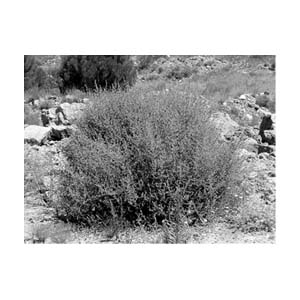Russian nuclear attack
 the Cold War may be over, but researchers at Hanford nuclear reservation in usa , continue to battle another kind of Russian invaders: radioactive tumbleweeds. Russian thistle has become a menace in the windswept desert of south-central Washington in the us . Russian thistle, a non-native species in the us , has become a problem particularly at underground burial sites for radioactive waste, where their taproots reach down as far as six metres and suck up radioactive elements such as strontium and cesium. Each winter, the deep taproots on the plant decay and the spiny brown skeleton of the plant above ground breaks off and rolls away spreading the contamination says an Associated Press report dated April 16, 2001.
the Cold War may be over, but researchers at Hanford nuclear reservation in usa , continue to battle another kind of Russian invaders: radioactive tumbleweeds. Russian thistle has become a menace in the windswept desert of south-central Washington in the us . Russian thistle, a non-native species in the us , has become a problem particularly at underground burial sites for radioactive waste, where their taproots reach down as far as six metres and suck up radioactive elements such as strontium and cesium. Each winter, the deep taproots on the plant decay and the spiny brown skeleton of the plant above ground breaks off and rolls away spreading the contamination says an Associated Press report dated April 16, 2001.
A stiff winter wind can push the tumbleweed as far away as six km. Ray Johnson, biological control manager for radiation protection, says, if this happens, contamination cannot be controlled. But most of the weed plants get hung up within a few hundred metres, usually on sagebrush, fences or in stairwells of the buildings scattered across the site. While less than one per cent of the tumbleweeds corralled and compacted at Hanford are radioactive, the cost of cleanup could run into millions of dollars.
Hanford is the most contaminated nuclear site in the us , built in 1943 for the top-secret Manhattan Project. For 40 years, Hanford made plutonium for usa 's nuclear arsenal. The last reactor was shut down in 1986.
Now radiation control specialists survey the tumbleweeds using Geiger-Mueller counters that click when radioactivity is detected. If contaminated tumbleweeds are found, they are disposed off. "The weeds are fairly low danger,' says Todd Ponczoch, a radiation control technician. A large, 1.3 kg radioactive tumbleweed might measure out at 150 millirads, or about 0.01 per cent of the allowable annual dose of radiation per person at Hanford. To clean up the contamination radioactive tumbleweeds are pitch forked by specially trained and clothed workers into a regulated garbage truck, compacted and disposed of at an on-site low-level waste dump. The sites must be satisfactorily cleaned up and covered with six inches of clean soil or gravel.
